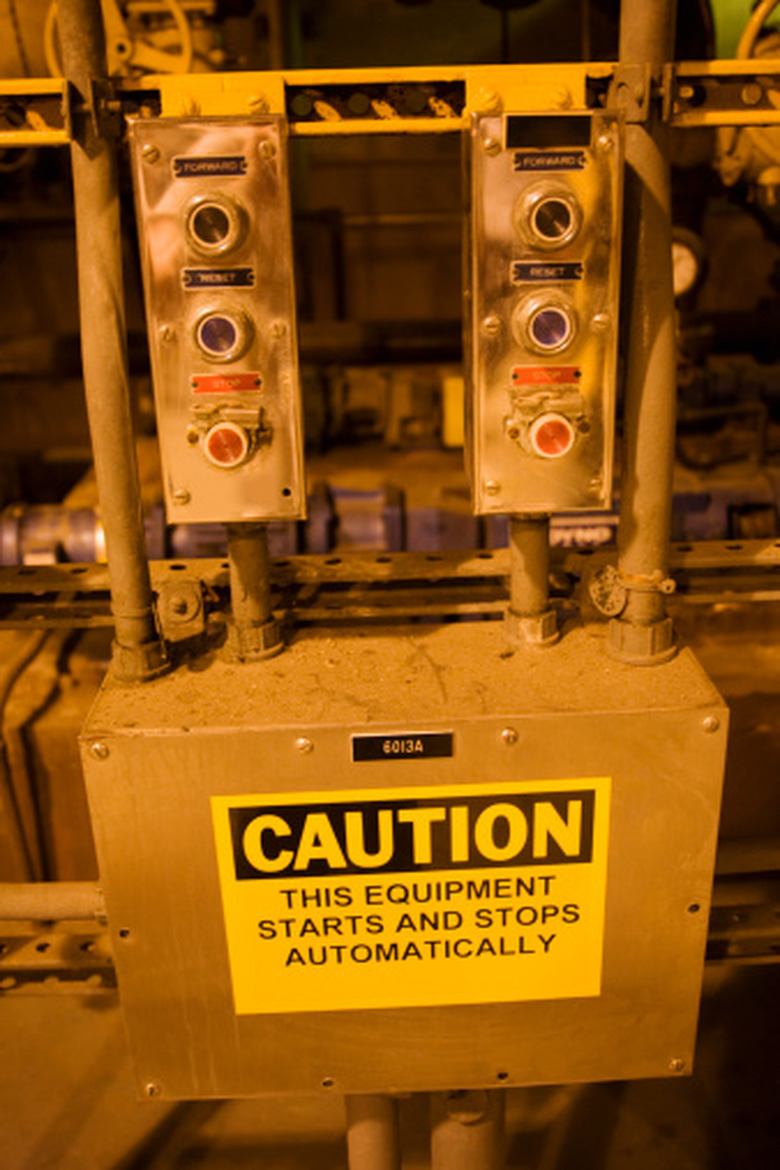How To Test Servo Motors
Things Needed
- Electrical safety gloves
- Screwdriver
- Ohm meter
- Megaohm meter (10 mega ohms +)
Servo motors are used in automatic control systems, such as cruise control systems in cars. They are referred to as closed loop systems because they measure specific parameters and provide a feedback control signal back to the system. You can troubleshoot a servo motor by testing to see if a short or open circuit exists.
Test for a Short Circuit to Ground
Step 1
Turn off all power sources to the machine that houses the servo motor.
Step 2
Check T1, T2, T3 (all three-phase) to the ground wire with a megaohm meter. Begin by placing the positive lead of the meter onto T1 and the negative lead of the meter to ground. Repeat this procedure for T2 and T3. Ensure the leads on both ends are not touching anything else, including other leads. Each phase should measure between 600 to 2,000 megaohms. If the resistance reading is zero or reflects a low resistance, you have a short in the system.
Step 3
Troubleshoot the cable if you have a short in the system. Disconnect the cable from the motor. Physically inspect the cable to see if any connector pins are physically touching or shorting together. Check to see if coolant got into the connector between the cable and the motor. Use the megaohm meter to ensure the connector pins are isolated within the cable. Place one lead of the megaohm meter on one pin and the other lead on another pin. The resistance should read well over 20 megaohms indicating you have complete isolation between pins within the connector. Do this test for all pins in the connector. If you read a resistance significantly lower than 20 mega ohms across any set of pins, you have a bad cable and it should be replaced. If the cable is ok, you have a bad servo motor and it should be replaced.
Test for an Open Circuit or Short Between Phases
Step 1
Turn off all power sources to the machine that houses the servo motor.
Step 2
Check the connection between the phases T1, T2 and T3. Do this by placing an ohm meter between T1 and T2, T2 and T3 then T1 and T3. In each case, the reading should be between 0.3 and 2 ohms. If the reading is zero, a short circuit between the phases exists. If the reading is well above 2,000 ohms, an open circuit exists.
Step 3
Troubleshoot the motor if either a short or open exists. If the motor is a DC type, check the brushes. To locate the brushes, remove the round caps from around the motor. Once the caps are removed, you will see a spring with a square block. This houses the brushes. Check to see if the brushes are worn. Also check for wear on the commutator, which is also housed inside the square block. If necessary, wipe and clean all surfaces around the commutator and brushes.
Cite This Article
MLA
Chestnut, Dwight. "How To Test Servo Motors" sciencing.com, https://www.sciencing.com/how-8045943-test-servo-motors/. 7 August 2017.
APA
Chestnut, Dwight. (2017, August 7). How To Test Servo Motors. sciencing.com. Retrieved from https://www.sciencing.com/how-8045943-test-servo-motors/
Chicago
Chestnut, Dwight. How To Test Servo Motors last modified August 30, 2022. https://www.sciencing.com/how-8045943-test-servo-motors/
